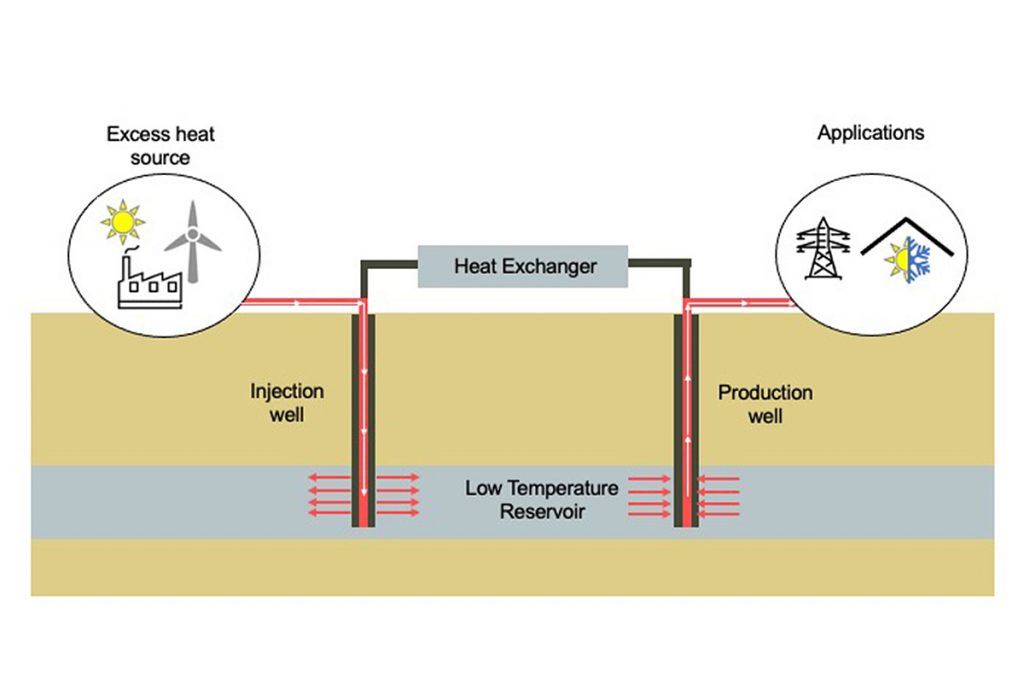
Conceptual schematic diagram of the Advanced Geothermal Energy Storage system proposed by the UIUC study (source: University of Illinois)
Researchers from the University of Illinois Urbana-Champaign have successfully demonstrated the use of an abandoned oil and gas well for efficient geothermal heat storage. The findings of this study have been published in the journal Renewable Energy (https://dx.doi.org/10.1016/j.renene.2022.07.145)
The study was led by Tugce Baser, a professor in civil and environmental engineering. It is the first field-scale demonstration of the concept of Advanced Geothermal Energy Storage systems – subsurface storage of heat to create an artificial and sustainable geothermal reservoir.
The host for the geothermal reservoir was the Illinois Basin, a low-temperature basin with high porosity and optimum thermal conductivity sandwiched between insulating layers. These characteristics have made the basin ideal for establishing an artificial heat reservoir that can retain fluids hot enough to generate electricity.
Using data from previous studies and the results of preliminary numerical models, the researchers chose to inject preheated fluid at 50 degrees Celsius into the Cypress Sandstone. This is a porous rock until located approximately 900 meters in the subsurface of the test site. The fluid was injected into a former gas well which already had most of the needed infrastructure in place.
After shutting down the well, it was monitored for changing in thermal conditions and pressure for five days. The results indicated that the system can support an energy storage efficiency of up to 82% and that the extracted fluids can generate an electrical power of 5.74 MW. This is under the conditions of simultaneous monthly injection and production with an initial 90 days charging period.
The proposed system benefits from existing infrastructure while simultaneously repurposing old oil and gas wells and offering an efficient, economical, and environmental approach to thermal storage. “The artificial reservoir can be used to store excess heat energy from industrial sources and eventually more sustainable sources like wind and solar,” said Baser.
The study was supported by the U.S. Department of Energy with contributions from the Illinois State Geological Survey and the Projeo Corporation.